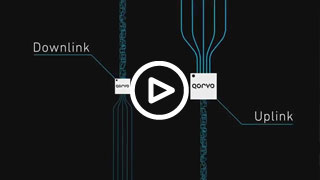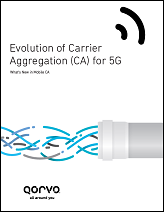Carrier Aggregation
Enabling Carrier Aggregation
Speed, capacity and demand define the mobile experience. Streaming video, games, applications and other data-intensive processes all drive mobile network operators to offer higher-bandwidth services to acquire and retain customers.
The challenge? Providing these higher data rates with new and re-farmed spectrum that is fragmented across multiple bands and regions.
Carrier aggregation (CA) is the answer.
CA enhances network performance and ensures a high-quality user experience by enabling operators to provide higher uplink and downlink data rates using their existing spectrum.
Carrier Aggregation and 5G
Carrier aggregation (CA), 4x4 DL MIMO, HPUE, CBRS and LAA are growing across the world.
The number of 4G LTE frequency bands is increasing. We are also moving into an era of downlink CA beyond 5 Component Carriers (CC). High Performance UE (+26 dBm) usage is expanding as is LAA (Licensed Assisted Access) in unlicensed 5 GHz spectrum enabling small cell densification.
The U.S. is about to embark on 3.5 GHz in shared spectrum, Citizens Broadband Radio Service (B48 CBRS), which will enable expansion of private LTE networks and neutral hosts. 2018 will bring the rollout of the FirstNet B14 LTE system for first responders, which will be available for usage in consumer cell phones where spare capacity exists.
3GPP has approved the first 5G New Radio (New Radio) Specification (38.101) using an LTE anchor in a Dual Connect configuration of LTE and 5G systems, called non-standalone (NSA NR). 5G will initially use FR1 (Frequency Range 1, <6 GHz) bands n28, n41, n71, n77, n78 and n79; then mmWave FR2 (Frequency Range 2, >6 GHz) band n257 (28 GHz); and followed by n260 (39 GHz).
| Region | Deployed | Planned |
|---|---|---|
| Europe | 3CC_CA, UL 2CC_CA B1, B3, B7, B20, B28, B38 |
4CC_CA, LAA, L+L CA B40, B46, n28, n78 |
| China | 3CC_CA, UL 2CC_CA B1, B3, B5, B8, B39, B40, B41 |
UL 3CC_CA, 4x4 MIMO, HPUE B38, n78, n79 |
| South Korea | 5CC_CA, UL 2CC_CA, 4x4 MIMO B1, B3, B5, B7, B8 |
LAA B46, n78, n257 |
| Japan | 4CC_CA, 4x4 MIMO B1, B3, B11, B18, B19, B21, B26, B28, B41, B42 |
5CC_CA, UL 2CC_CA, HPUE n77, n79, n257 |
| Australia | B1, B3, B5, B8, B40, B41 | 2CC_CA |
| U.S. | 4CC_CA, 4x4 MIMO, LAA, HPUE B4/66, B5, B12, B13, B2, B30, B41, B46, B71 |
>5CC_CA, UL 2CC_CA, CBRS B14, B48, n71, n41, n257, n260 |

